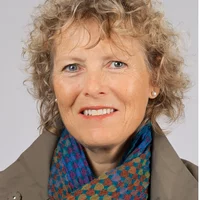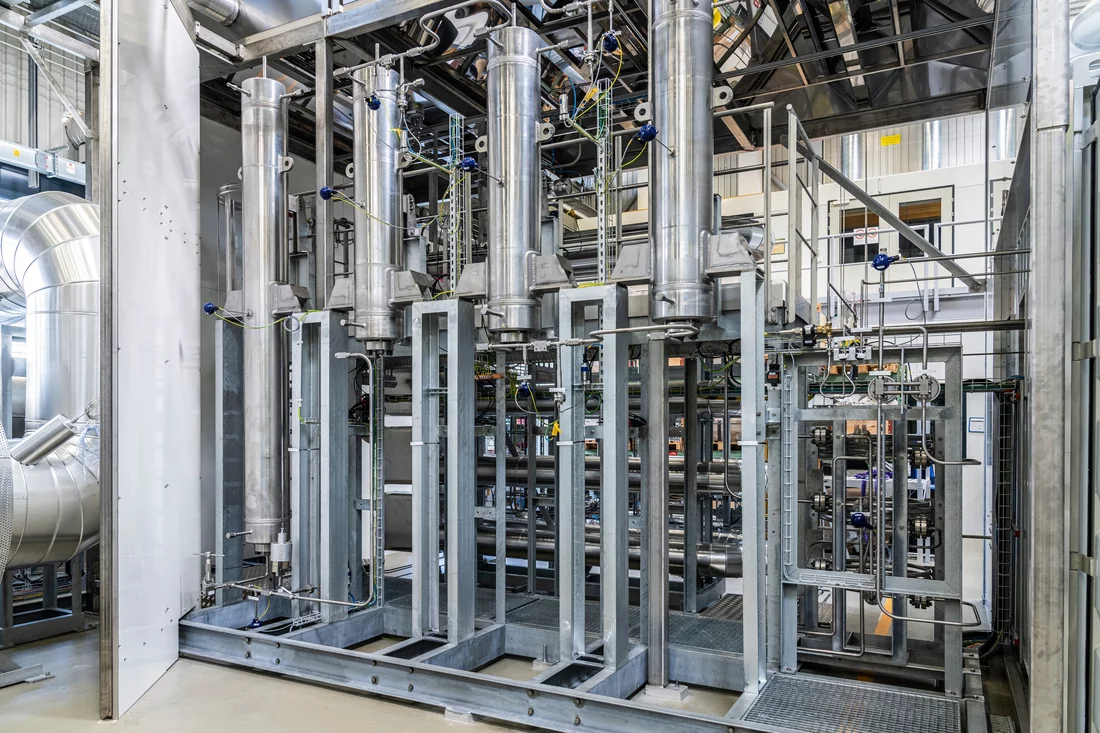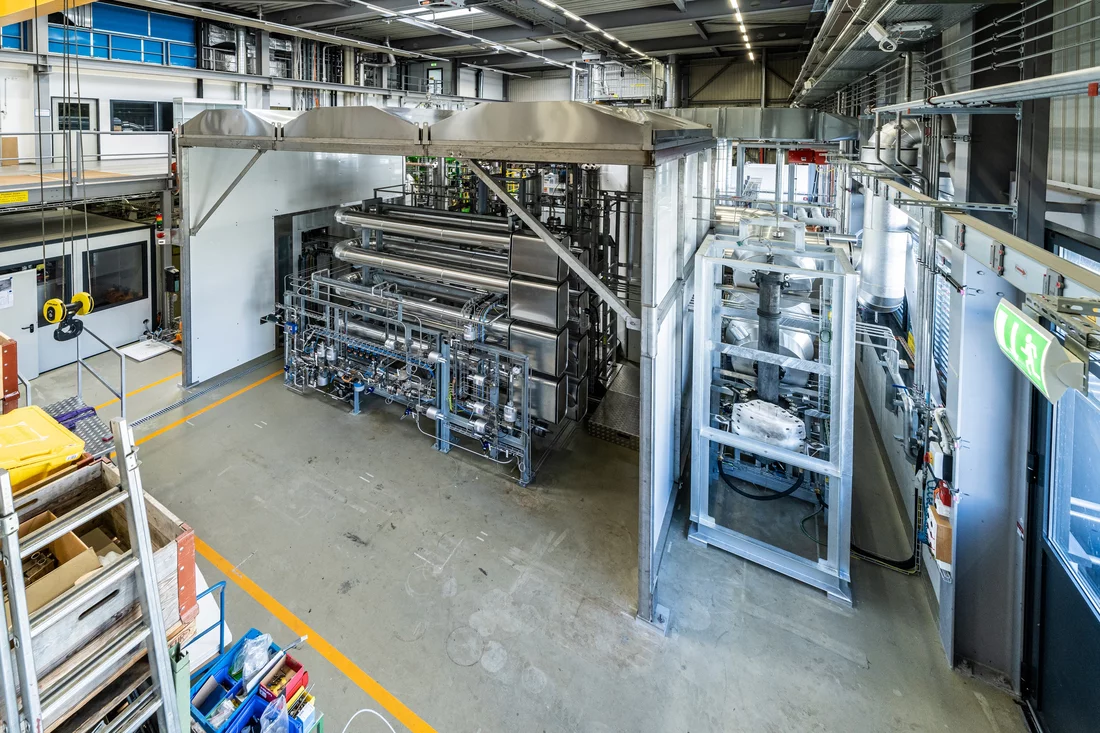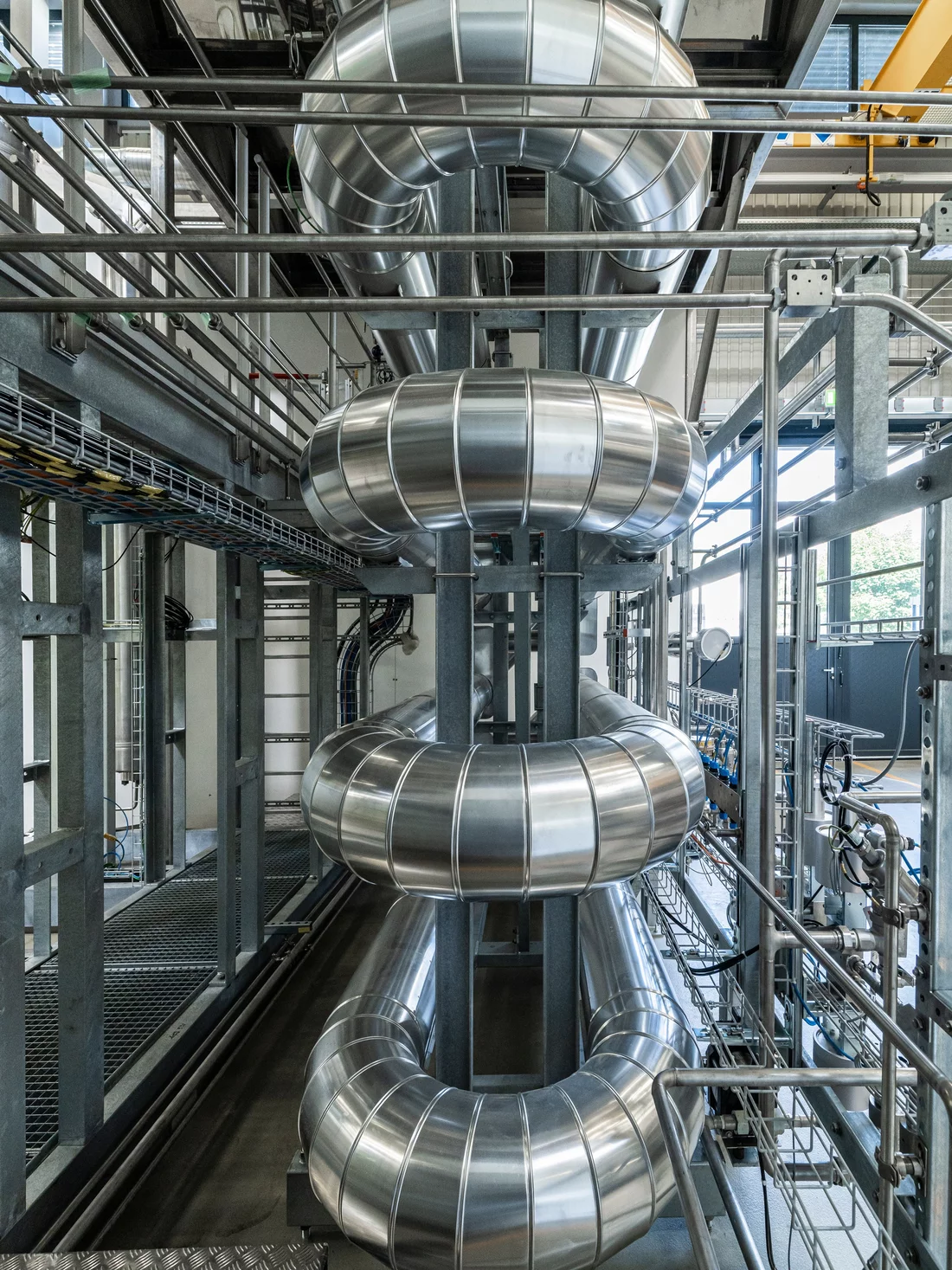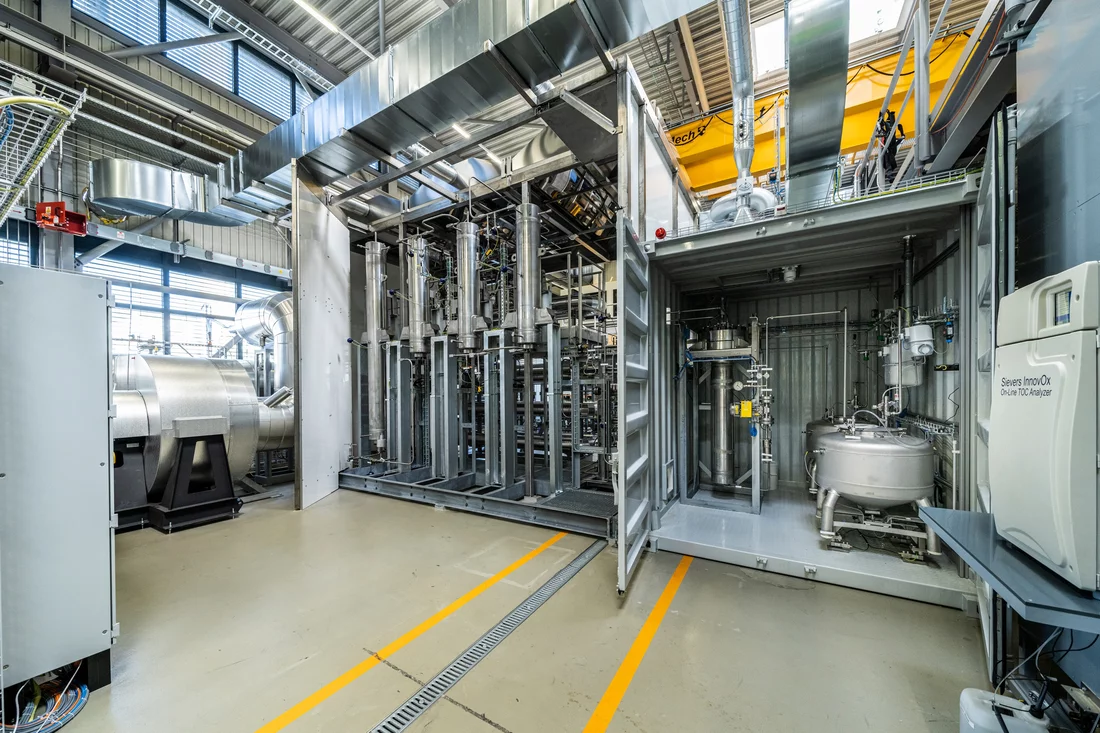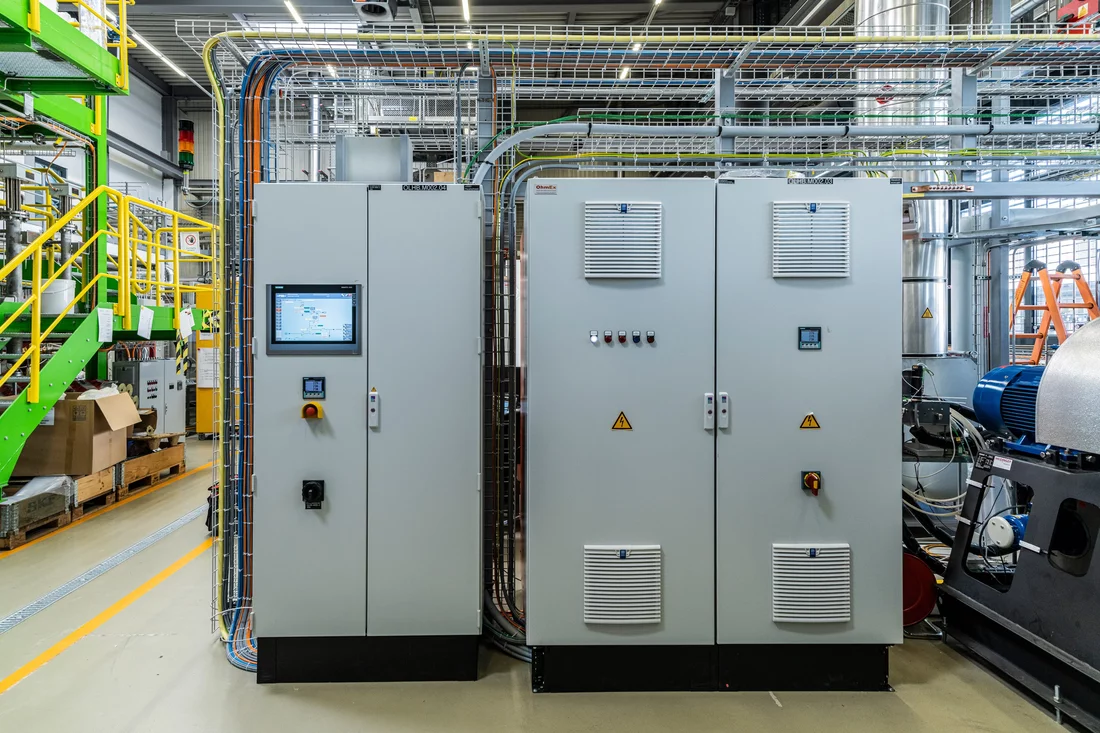HydroPilot is a pilot plant for the catalytic hydrothermal gasification (cHTG) of wet organic waste. In cHTG, biomethane is produced under high pressure (280 bar) and high temperature (450 °C). Under these conditions, salts are no longer soluble in water and can thus be separated from the main process stream in the salt separator. The resulting brine contains valuable substances, for example phosphorus, which can later be processed into a fertilizer. Another advantage of cHTG over previous processes is that cHTG does not require drying of the feedstock, which makes the overall efficiency very high: 60-70% of the energy from the wet waste can thus be converted into biomethane.
HydroPilot is the largest such plant for cHTG with a capacity of 110 kg/h wet waste. It was designed, constructed, and financed by a consortium led by PSI, including KASAG SWISS AG, Treatech sàrl, ExerGo sàrl, and Afry Schweiz AG. It has received funding from the Swiss Federal Office of Energy's Pilot & Demonstration program. Additional support by Fachhochschule Nordwestschweiz (FHNW) and Practical Performance Improvement Häseli (PPIH) is gratefully acknowledged.
HydroPilot corresponds to a Technology Readiness Level (TRL) of 6. It has been built to address all relevant scale-up questions for a pre-industrial plant. Commercial plant capacities are expected in the range of 1 to 5 t/h wet feed capacity. This corresponds to roughly 0.6-3 MW of biomethane output.
HydroPilot is part of the Energy System Integration (ESI) Platform.
Process description
The cHTG process developed at PSI since the early 2000’s pumps a biomass sludge to a pressure of approx. 280 bar. This pressurized feed stream is heated to approx. 360°C in a heat exchanger, and then further heated to approx. 450°C in the salt separator – a device developed at PSI. In this separator, the feed stream reaches supercritical water conditions, which arise above 221 bar and 374°C. Under these conditions, water does not dissolve salts anymore, which precipitate to the bottom of the separator, from where they are continuously recovered as a brine. The remaining salt-free organic-water stream passes through a sulfur trap to remove sulfur species before entering a catalytic reactor filled with a ruthenium catalyst. This is the core step of the process, converting all organics into methane, carbon dioxide and some hydrogen. After recovering process heat in the heat exchanger and cooling down to ambient temperature, the gases are separated from the water phase. The latter contains almost no organics but some ammonium carbonate that can be separated and used as a fertilizer, together with the nutrients in the brine.
Gallery
Contact
Scientific and technical inquiries may be directed to Prof. Dr. Frédéric Vogel, HydroPilot project lead and group head CPE.
Commercial inquiries may be directed to our licensees Treatech sàrl, Dr. Gaël Peng, CTO, or KASAG SWISS AG, Thomas Gerber, CEO.

